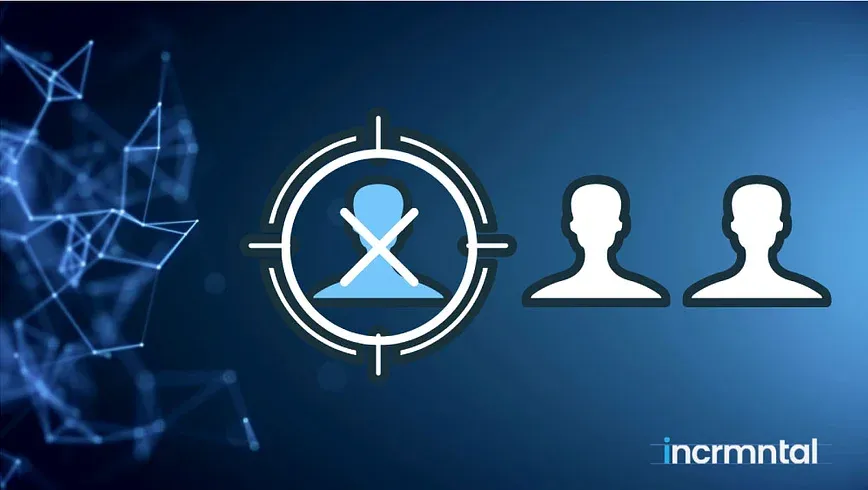Solutions
Teams
Built for your whole team.
Industries
Trusted by all verticals.
Mediums
Measure any type of ad spend
Platform
Use Cases
Many Possibilities. One Platform.
AI and Automation
The Always-on Incrementality Platform
Teams
Built for your whole team.
Industries
Trusted by all verticals.
Mediums
Measure any type of ad spend
Use Cases
Many Possibilities. One Platform.
AI and Automation
The Always-on Incrementality Platform

The past two decades gave many of us as marketers unlimited access to 1st and 3rd party user-level data. While (hopefully) none of us actually used this data for harm – the potential within this access was outrageous.
For a while it made a lot of sense to us – users had free access to media and services, and in return, we were able to target advertising to the users, utilizing user-level data to improve the CPMs we were able to charge. And as well all know nothing in life is truly free.
"if you're not paying for the product, you are the product"
But as the internet matured, and users were able to choose amongst free, freemium, paid services – there was a rising concern about the benefits users were receiving against the amount of private information that was being traded between adtech companies so freely.
A Pew Research Survey from 2018 showed that 80% of social media users said that they were concerned about advertisers and businesses accessing the data they shared on social media platforms.
It was inevitable that regulators would intervene, and while regulators had – it wasn’t until Apple made their own Privacy announcement during WWDC 2020 that the world was really pushed to action.

Apple deserves a lot of credit for the privacy moves. Starting with Safari Intelligent Tracking Prevention (ITP) that was initially launched in September 2017 placing limitations on advertisers access to cookies, and evolving this solution with later versions reaching all the way to App Tracking Transparency (ATT) launched with iOS14.5
Shortly other players followed suit, Firefox started blocking third-party cookies in 2019.
Google was actually one of the last major players to offer a similar solution. If you’ll read the white paper we published (Measurement in a Post IDFA World), you’ll see that Google was always a follower when it came to privacy moves. This is only rational, as while Apple makes only around $10bn from advertising with Apple Search Ads – Google makes approximately $150bn from advertising. Google has a very clear incentive to continue utilizing user-level data, to offer superior targeting and optimization capabilities to both advertisers and publishers.
In previous articles, we predicted that Google will deprecate the Ad ID within two years. We might have been off by a few months – but our prediction remained true.
Google Introduces the Privacy Sandbox on Android (February 16, 2022)
Privacy Sandbox is a new generation of technologies that can replace the tracking primitives that are in the web today.
That’s how Google phrased it. Primitives. Not legacy methods. While one can find the use of this word offensive – Google felt that the ways of targeting an individual person with advertising, trying to spoon feed a customer with ultra personalized advertising was a primitive practice that needed to go away from this world.
The Google Android Privacy Sandbox is a protected, safe guarded environment, where user-data will be anonymized and made available for tracking, targeting, and attribution, only in a way that disables both advertisers and publishers from accessing the user-level data to protect the users’ anonymity.
At its core, the Google Android Privacy Sandbox is very similar to Apple’s SKAdNetwork framework. Both offer a cohorted attribution, offering access only to aggregated data, rather than individual user clicks and postbacks.
Google named their solution FLoC.
FLoC stands for Federated Learning of Cohorts , which simply put – is an aggregated group of users, aggregated based on specific context – such as campaign ID, or placement, or other behavioral traits.
Google also came up with a solution for retargeting and remarketing with Turtledove, which is apparently another acronym for Two Uncorrelated Requests, then locally executed decision on victory.
Turtledove will allow ad networks to add users to segments in the browser based on certain actions (such as “add to cart”) in order to target specific ads for said group, all while not exposing impressions or clicks data unless it has been anonymized within the sandbox.
It’s unknown if Turtledove will also make it into the Android privacy sandbox.
No one really knows just yet.
When Apple announced ATT and SKAdNetwork, they did not offer a designated position to the 3rd party attribution solutions. Advertisers would need to rely on ad networks passing them the SKAdNetwork postbacks. Later versions of SKAdNetwork and iOS allows advertisers to get access to SKAdNetwork postbacks directly, and some have abandoned their 3rd party attribution solution, but the majority remain with their MMP to have an aggregated reporting platform.
No. Google specified that the Sandbox for Web (Chrome) will limit access to browser information used for fingerprinting.
Likely yes. While no one knows what will be the privacy threshold, Google applies k-anonymity for the Web-Chrome Sandbox. k-anonymity acts exactly like the Apple Privacy Threshold where a certain minimum number of users need to be grouped for the sandbox to send out tracking postbacks.
None. INCRMNTAL never required user-level data, and only operates using aggregated data, with or without tracking and attribution. One of the most common use-cases customers use the platform is to measure channels that never had any tracking or attribution (such as TV, Radio, Mailers, OOH). More or less user-level data should have no impact over incrementality measurement while applying causal data science.

INCRMNTAL is a data science SaaS company, developing an incrementality measurement platform, built for a post-privacy world.
The platform allows companies to measure the actual value coming from marketing activities across mobile, web, influencers, TV and any other medium without needing to run any experiments.
We have a solution for marketing measurement without using any user-level data.
Schedule a demo if you want to see our platform in action!

Maor is the CEO & Co-Founder at INCRMNTAL. With over 20 years of experience in the adtech and marketing technology space, Maor is well known as a thought leader in the areas of marketing measurement. Previously acting as Managing Director International at inneractive (acquired by Fyber), and as CEO at Applift (acquired by MGI/Verve Group)